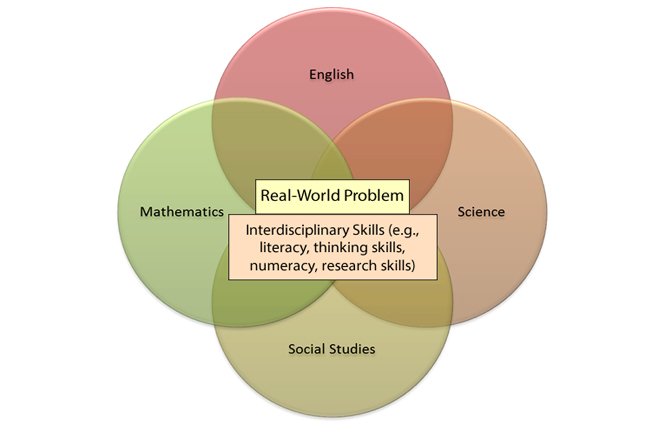Scholars use theory to coordinate research across disciplines

Integrated studies combines curriculum from two or more disciplines, allowing students to see how ideas are connected.
As interdisciplinary research developed and matured, interdisciplinary science, a discipline that studies the phenomenon, emerged in Western countries in the 1970s. Interdisciplinary science is based on the self-awareness, self-reflection of interdisciplinary research.
There are three events that marked its beginnings. One was the academic conference and the publication of related works. In September 1970, the Center of Educational Research and Innovation under the Organization for Economic Cooperation and Development, together with the French Ministry of Education, jointly held the first academic seminar on interdisciplinary research at the Nice Sophia Antipolis University.
Two years later, Interdisciplinarity: Problems of Teaching and Research in Universities, a three-volume collection of seminar papers, was published. Another event was the establishment of professional journals.
In 1976, British scientists including A. R. Michaelis, founded the quarterly journal Interdisciplinary Science Reviews. The editorial board members are from many different fields in Britain, the United States, Germany, France and the Soviet Union. In addition, the establishment of the academic communities, such as the Integrity Research Associates in 1979 and Interstudy in 1980, also promoted interdisciplinary research.
In the 1980s, with the development of interdisciplinary research, interdisciplinary science in China gradually came into being. In 1985, Liu Zhonglin published in the journal Future and Development the thesis “Interdisciplinary Science,” which explicitly expounded upon the background and research areas of interdisciplinary study. In 1990, the book An Introduction to Interdisciplinary Study was published. Those influential works published in later years include Educational Theory on Interdisciplinary Research by Liu Zhonglin, Introduction to Interdisciplinary Science and Thought and Methods on Interdisciplinary Research with Xie Enze.
Based on the themes of interdisciplinary research and the works that have been published in this field, the research domains of interdisciplinary science can be divided into general theory, theory of interdisciplinary thinking, theory of research, theory of interdisciplinary education, and case studies.
The general theory mainly studies the connotations, functions and divisions of interdisciplinary research, and the theory of interdisciplinary thinking discusses the characteristics, function and methods of interdisciplinary research. Theory of research refers to the characteristics, function, method, management system and evaluation of the research itself. Theory of interdisciplinary education refers to the content, function, training objectives, implementation mode and cultivation mechanism of interdisciplinary education. Case studies explore wider themes, including establishing a new discipline through interdisciplinary approaches, the role that a particular discipline plays in interdisciplinary research and the detailed way that the interdisciplinary education can be applied in a specific field.
